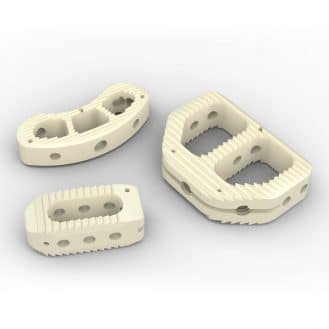A knee prosthesis can be used to replace all or part of the joint when the damaged cartilage no longer allows for satisfactory joint mobility or pain-free support.

A knee prosthesis can be used to replace all or part of the joint when the damaged cartilage no longer allows for satisfactory joint mobility or pain-free support.
During a knee replacement surgery, the surgeon may choose to place a complete (three-compartment) or partial (unicompartmental) prosthesis depending on the condition of the knee and ligaments.

For a complete knee replacement, you can choose between standard or customized instrumentation. These are the differences:
The tibial bearing is one of the components of the three-compartment or unicompartmental sliding knee prosthesis. There are fixed-bearing knee prostheses and mobile-bearing knee prostheses.
Mobile inserts have gained in popularity in recent years as, in theory, they have certain advantages over fixed inserts, particularly in terms of improved movement and service life.
However, to date, there is no concrete evidence of significant clinical improvements related to the use of mobile bearings.

Aston Medical three-compartment mobile-bearing knee prosthesis
Three types of alignment can be chosen when implanting the prosthesis components: neutral mechanical alignment, kinematic alignment or hybrid alignment. These are the differences:
Three types of complications can occur during knee replacement surgery: intraoperative complications, early complications and secondary complications. These complications are related to the nature of the procedure itself and don’t include possible risks related to anesthesia or surgical risks related to the patient’s age and medical history.
These are the three types of complications:


